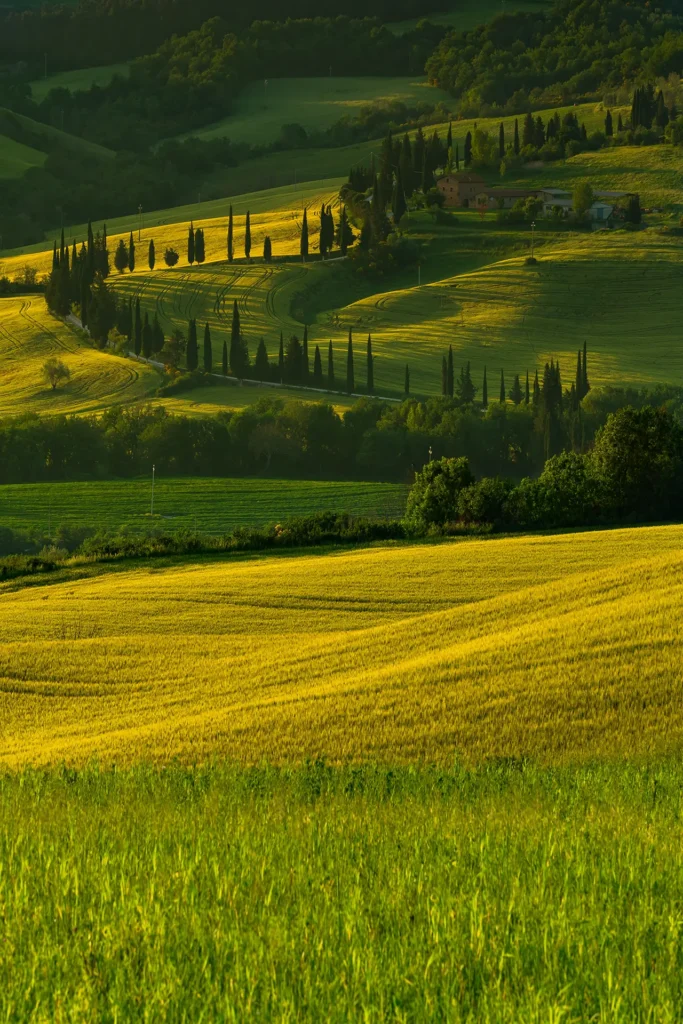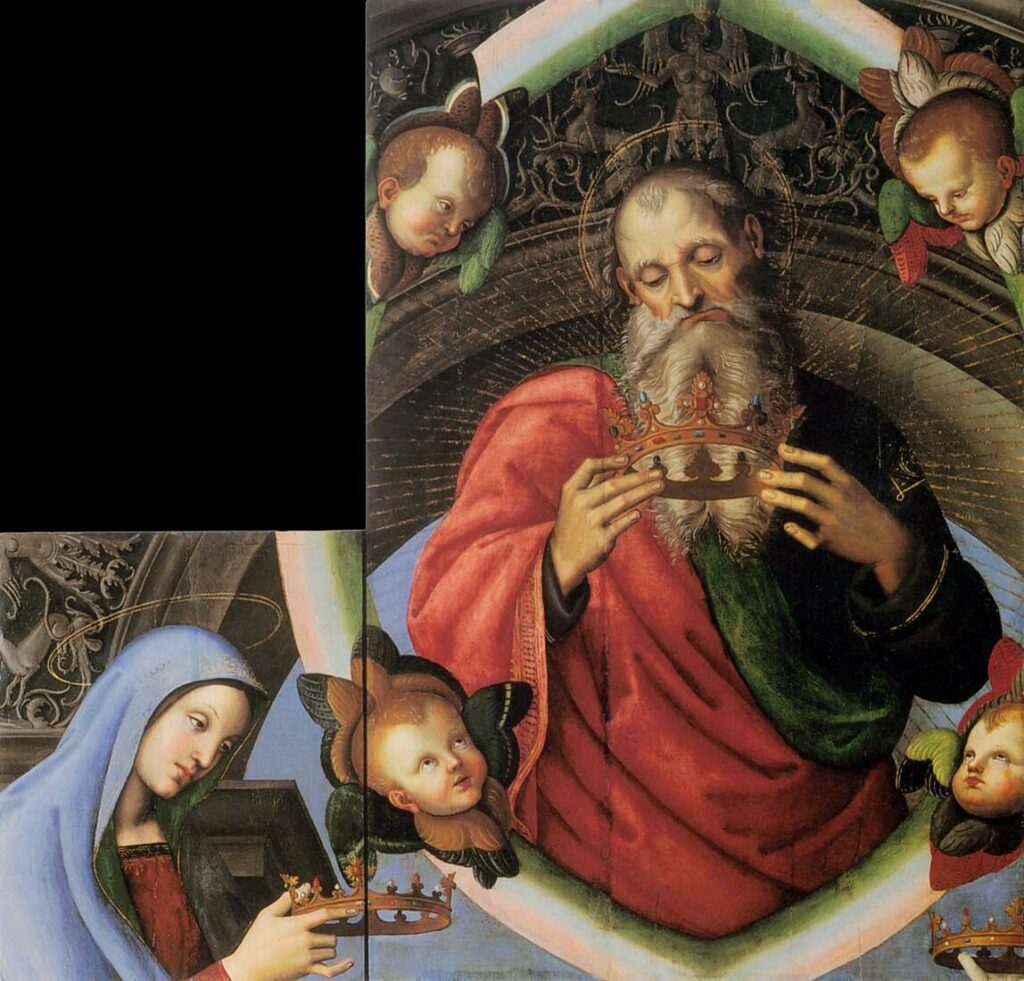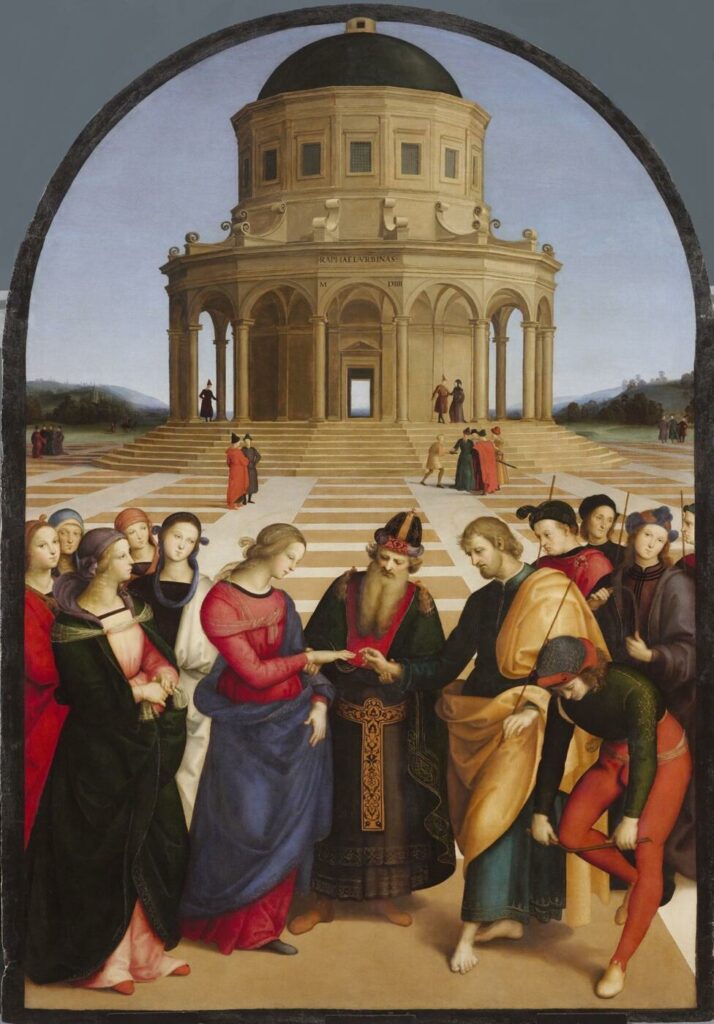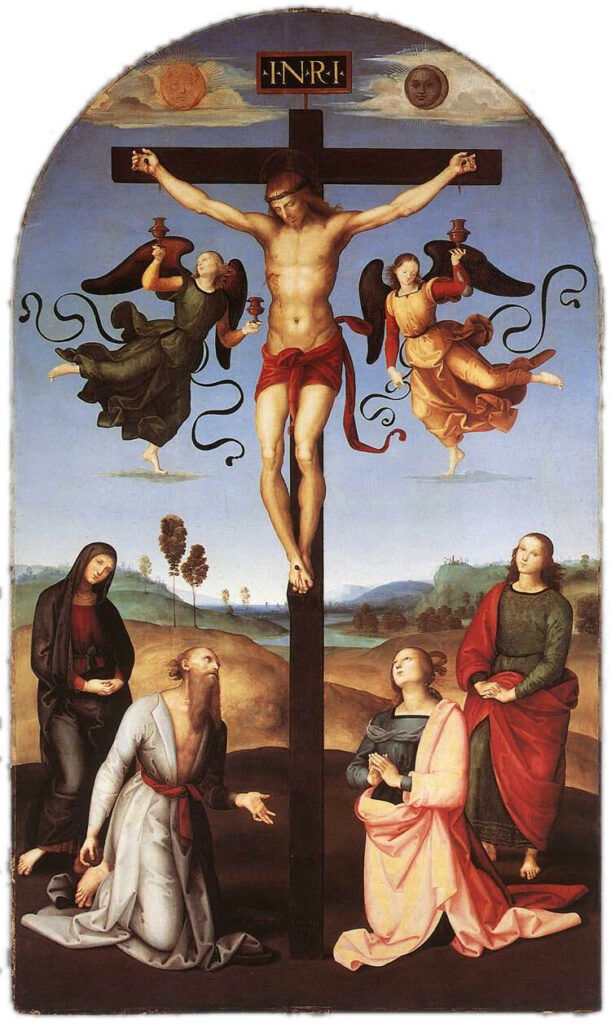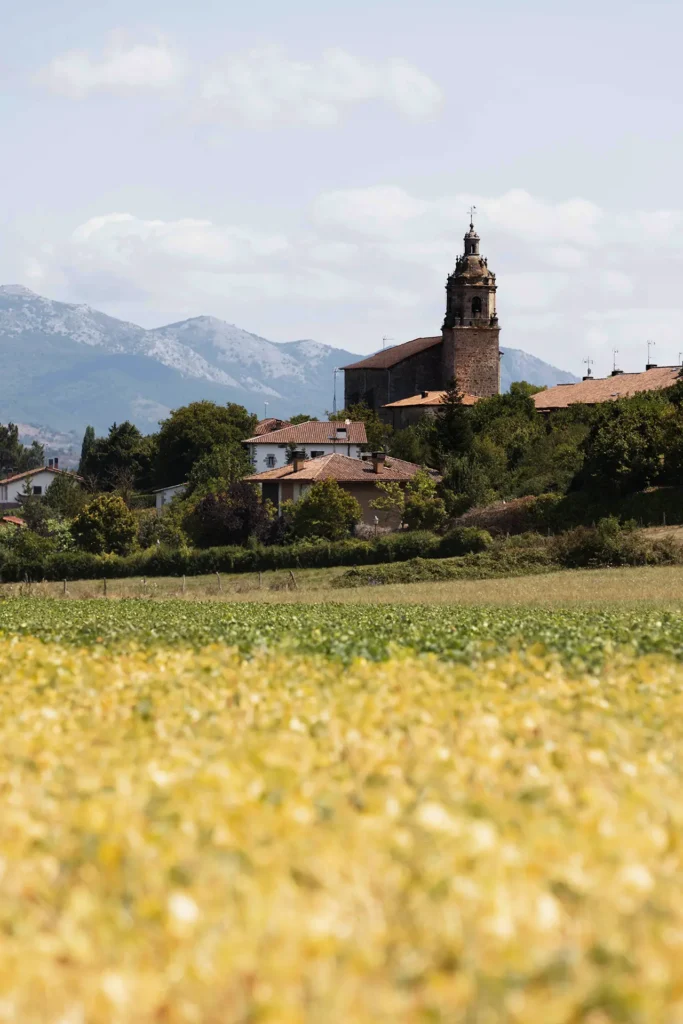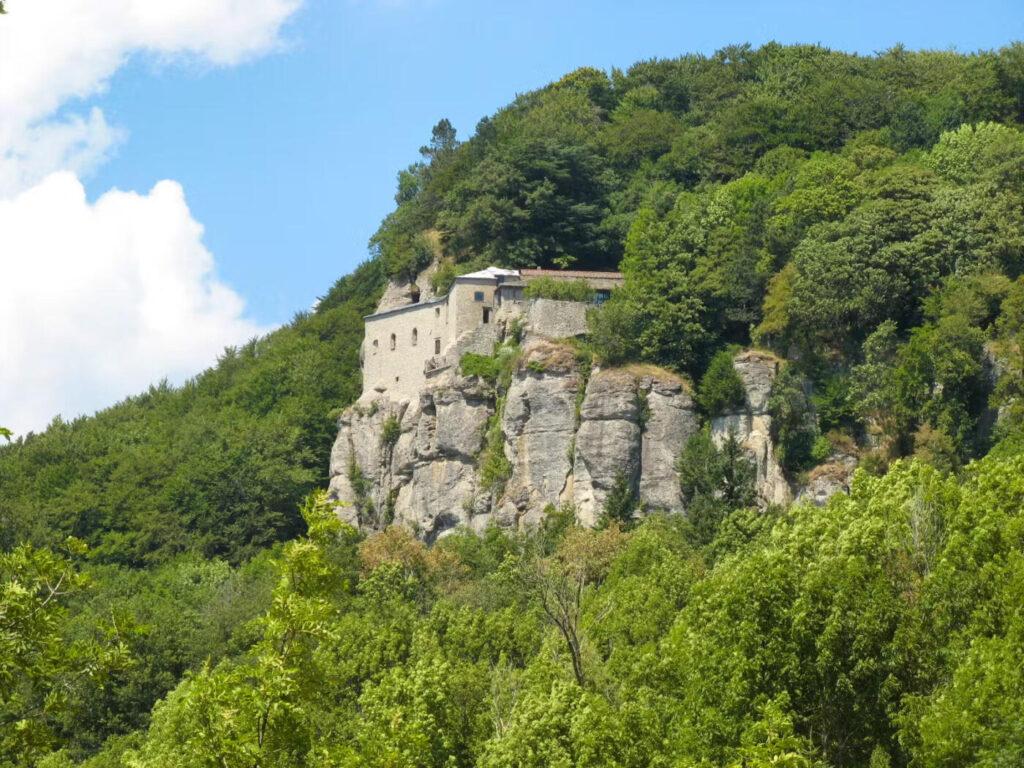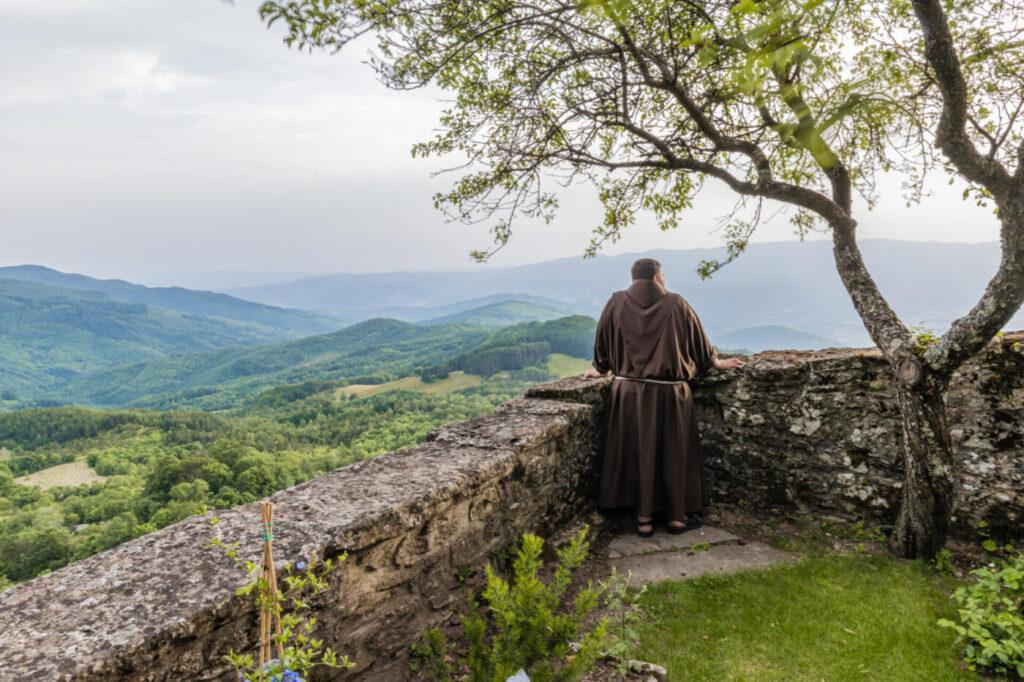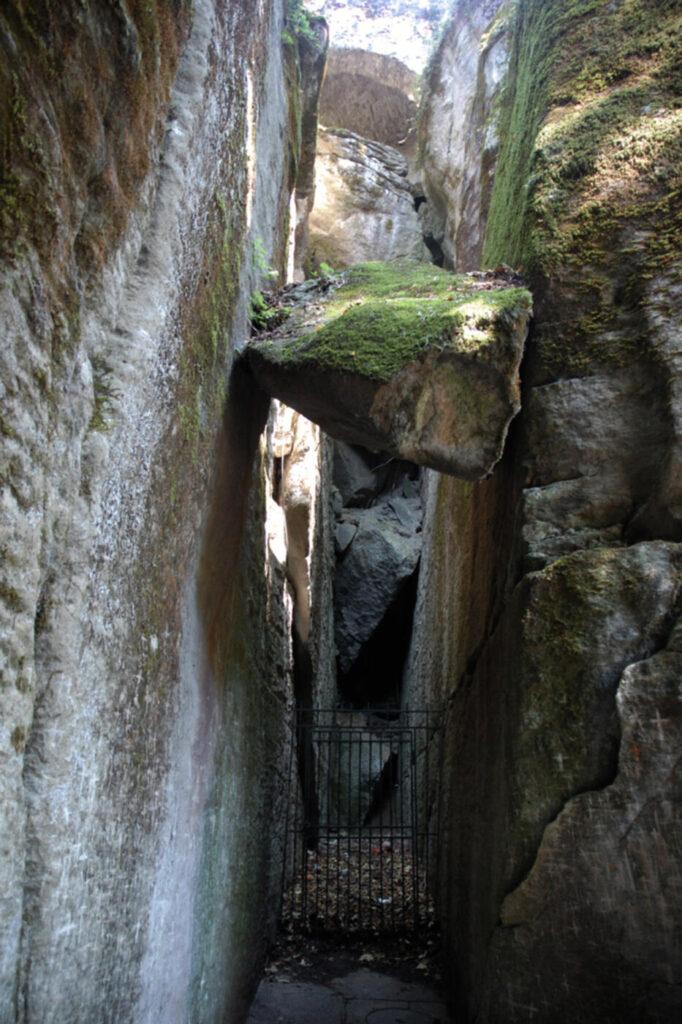The Way of St. Francis
A Journey into the Soul of Umbria and the Enchantment of Città di Castello
A Journey into the Soul of Umbria and the Enchantment of Città di Castello
Welcome dear pilgrims in Umbria
Welcome, dear wayfarers, to Umbria, the green heart of Italy, a land steeped in spirituality, history and natural beauty.
Are you ready to embark on a journey that will take you not only through breathtaking landscapes, but also inside yourself?
We are talking about the Cammino di San Francesco, a journey of faith and discovery in the footsteps of the patron saint of Italy, who lived and spread his message of peace and brotherhood here.
The Cammino di San Francesco is not just a path, it is an experience that winds through silent hermitages, medieval villages, lush valleys and wooded peaks, offering you the opportunity to reconnect with nature, history and your spirituality.
Every step is an invitation to contemplation, an opportunity to admire the art and architecture that narrate centuries of devotion, and to savor the authentic flavors of a generous land.
Città di Castello: A Jewel on the Franciscan Itinerary
Among the most significant and fascinating stages of this spiritual journey, Città di Castello stands out. Located in the Upper Tiber Valley, this city is not only an important cultural and artistic center, but also a historical crossroads on the Franciscan Path, a place where faith intertwines with beauty and hospitality.
Why is Città di Castello an unmissable stop?
- The Bond with Saint Francis: Although it was not the main residence of the Saint, Città di Castello was a place of passage and preaching for Saint Francis and his first followers. Here, the Franciscan presence is still alive, witnessed by churches and convents that tell the story of a deep-rooted devotion.
- A Treasure of Art and History: Crossing the ancient walls, you will be catapulted into a timeless atmosphere. Its splendidly preserved historic center is a true open-air museum. You can admire:
- The majestic Cathedral, with its imposing façade and Romanesque bell tower.
- Renaissance palaces of extraordinary beauty, such as Palazzo Vitelli a Sant’Egidio and Palazzo Vitelli a Porta Sant’Angelo, which bear witness to the splendor of the local noble families.
- The Pinacoteca Comunale, which houses works by great masters such as Raffaello, Signorelli and Ghiberti, offering a fascinating journey through art from the Middle Ages to the Renaissance.
- The Church of San Francesco, a place of profound spirituality and history, where you can breathe the atmosphere of the first Franciscans.
- A Beating Heart of Culture: Città di Castello is a lively and dynamic city, with a rich calendar of events, exhibitions and cultural events that make it welcoming and interesting in every period of the year. There is no shortage of artisan workshops where you can discover local traditions and restaurants where you can taste the delights of Umbrian cuisine.
- Hospitality for Pilgrims: The city is well equipped to welcome wayfarers and pilgrims, offering accommodation solutions and services that make the stop pleasant and regenerating. You can find hospitality and rest before resuming your journey.
What to do in Città di Castello during your stopover:
Take the time to stroll through the streets of the historic center, letting yourself be enchanted by the squares and suggestive corners.
Visit its museums to immerse yourself in local art and history.
Don’t forget to taste the typical products of the Alto Tiberina gastronomy, from truffles to homemade pasta.
And above all, allow yourself to slow down, breathe the air of these places and connect with the spirituality that permeates every stone.
May your Camino di San Francesco be an unforgettable experience, full of discoveries, encounters and inner peace.
Città di Castello awaits you with open arms to offer you a piece of its soul.
Enjoy your journey!
The Via Francigena: An Ancient Path of Faith and History in the Heart of Europe
Dear pilgrims, wayfarers and curious people, you are about to discover or travel one of the most fascinating and historic itineraries in Europe: the Via Francigena.
Although your current journey has brought you to Umbria, in the footsteps of Saint Francis, it is essential to know the importance and beauty of this great medieval artery that has united peoples and cultures for over a thousand years.
What is the Via Francigena?
The Via Francigena is not a single path, but a bundle of routes, an ancient road network used in the Middle Ages by pilgrims who from continental Europe (especially from France, hence the name “Francigena”, or “road that comes from France”) headed towards Rome, the heart of Christianity, and sometimes continued towards Puglia to embark for the Holy Land, or towards Santiago de Compostela.
The “official” or best-known route is the one described by Archbishop Sigeric of Canterbury in the 10th century, who in 990 AD recorded the stages during his return journey from Rome to England. This account has become the point of reference for reconstructing and enhancing the itinerary, which is now recognized as a Great Cultural Route of the Council of Europe.
Why is the Via Francigena so important?
- A Bridge between Cultures and Nations: For centuries, the Via Francigena has represented a true “corridor” of cultural, economic and religious exchange. It has allowed the spread of ideas, artistic styles, traditions and trade, helping to shape the European identity. Cities, villages, pilgrim hospices and abbeys have arisen along its route, all witnesses to this vibrant interaction.
- A Spiritual and Inner Journey: As with every pilgrimage route, the Via Francigena offers a profound and transformative experience. It is an opportunity to disconnect from the daily routine, reflect, meditate and reconnect with one’s inner self. The slow pace of the pace, the beauty of the landscapes and the encounter with other travellers create a unique atmosphere of sharing and personal growth.
- Enchanting Landscapes and Hidden Treasures: The route passes through an incredible variety of landscapes: from the Alps to the rolling Tuscan hills, from the Lazio countryside to medieval villages rich in history and art. Each stage is a discovery of Romanesque churches, ancient parish churches, fortresses and cities of art that preserve centuries of human events.
- Hospitality and Tradition: Along the Via Francigena, an ancient tradition of hospitality is rediscovered. Many hospices, parishes and dedicated structures offer shelter to pilgrims, often with the possibility of sharing moments of conviviality and mutual listening.
How is it different from the Camino de San Francisco?
While the Cammino di San Francesco focuses specifically on the places linked to the life and work of the Saint in Umbria and Lazio, the Via Francigena is a much broader route, which crosses several European countries (England, France, Switzerland and Italy) with the final goal of Rome. Both are paths of faith, but with different origins and geographies. In some sections, such as in Lazio, the two routes can cross or run parallel for a short stretch, offering pilgrims the possibility of choosing the itinerary best suited to their intentions.
Whether your journey takes you to Rome or to other shores, the memory of the Via Francigena will remain a powerful symbol of faith, perseverance and of a Europe united by history and spirituality. Happy walking!
The Way of St. Francis from the North: A Journey into Uncontaminated Nature
The Cammino di San Francesco, when you travel it starting from the north, immediately immerses you in an embrace between wild nature and ancient history. Your adventure begins from a sacred and evocative place: the Sanctuary of La Verna.
La Verna: The Heart of the Casentinesi Forests National Park
Imagine finding yourself on the southern edge of the Casentinesi Forests National Park. It is one of the largest and most varied forest areas in Europe, a true natural jewel. Here, the mountain dear to San Francesco is mainly a spur of sandstone rock, surrounded by an imposing and incredibly beautiful forest, protected since the time of the Saint.
In this spectacular setting, nature reigns supreme:
- Flora: Prepare to lose yourself among centuries-old trees and lush vegetation.
- Fauna: It is not uncommon to encounter wild boars, roe deer, fallow deer, red deer and mouflons. But the real protagonist is the wolf, which here has one of the most important populations of the northern Apennines.
Alpe della Luna (Moon Alp):
A Corner of Wild Nature
After leaving La Verna, the path takes you towards the Alpe della Luna chain, a regional nature reserve. This is a vast wooded area, where the higher elevations are dominated by majestic beech trees, while lower down you will find large meadows and woods of Turkey oaks and black hornbeams.
Here, human presence is scarce and roads are almost absent, keeping the environment in an almost wild state. It is a paradise for wildlife, where you can spot:
- Woodland animals: Wild boars, roe deer, squirrels, fallow deer, porcupines, badgers, wolves, foxes and hares.
- Birds: Various species of woodpeckers and birds of prey such as the buzzard, sparrowhawk, goshawk and kestrel. With a bit of luck, you might even spot a golden eagle.
The Upper Tiber Valley: History, Art and River Landscapes
The route continues in the fascinating Upper Tiber Valley.
This area has considerable historical importance, having been a crucial crossing point for the Via Romea and the scene of numerous disputes. It is no coincidence that it is nicknamed the “Museum Valley“, thanks to the impressive concentration of monuments and art masterpieces that it hosts.
South of Città di Castello, the Tiber River opens into a wide plain, which extends for about 50 km until it meets the Nestore River. Here, the river landscape is dominated by:
- Poplar trees: The river is flanked by two imposing walls of poplars.
- Crops: Its waters irrigate vast tobacco crops.
- Flora and Fauna: You will also find small groves of Turkey oaks and downy oaks, wetlands rich in willows and, on the surrounding hills, woods interrupted by pastures and juniper shrubs.
- As for fauna, there are roe deer, brown hares and the goshawk. The wolf roams the higher wooded areas, where it finds its prey among wild boars and roe deer.
Eugubino: Between Mountains and Countryside up to Assisi
The last stop before arriving in Assisi is the territory of Eugubino. This is a predominantly mountainous area, which preserves natural beauty and art treasures. Since pre-Roman times, it has been crossed by important communication routes towards the Adriatic.
The wide basin of Gubbio, enclosed to the east by limestone mountains and to the west by gentle hills, is marked by roads and ditches that bear witness to the ancient Roman centuriation. Despite human activity, significant uncontaminated natural areas still remain. The area that slopes towards Valfabbrica and then towards Assisi is characterized by hills where oak, hornbeam and Turkey oak woods alternate with fields, pastures and bushes.
This path is not just a physical journey, but a deep immersion in the history, spirituality and uncontaminated nature of the heart of Italy. Are you ready to experience it?
